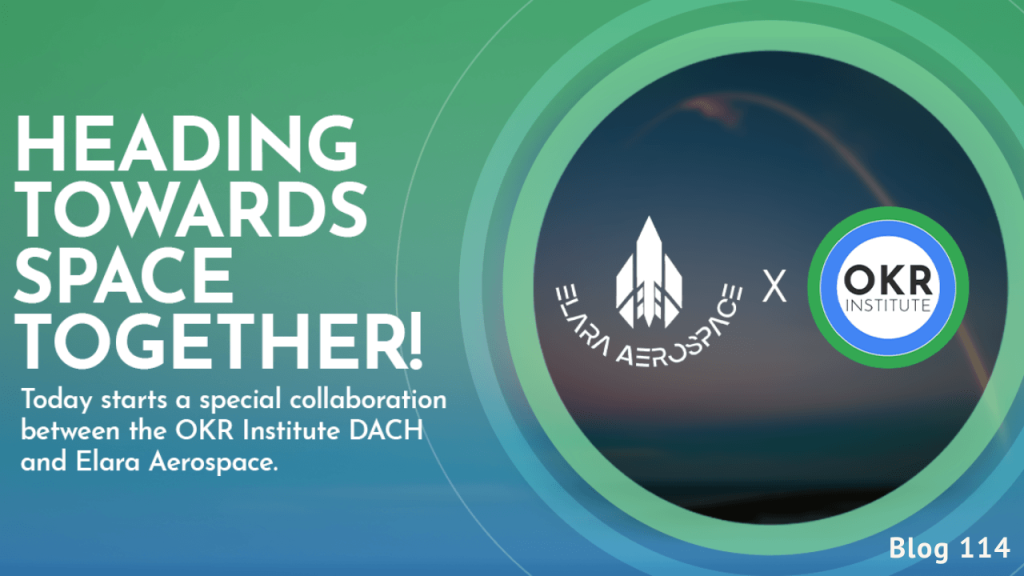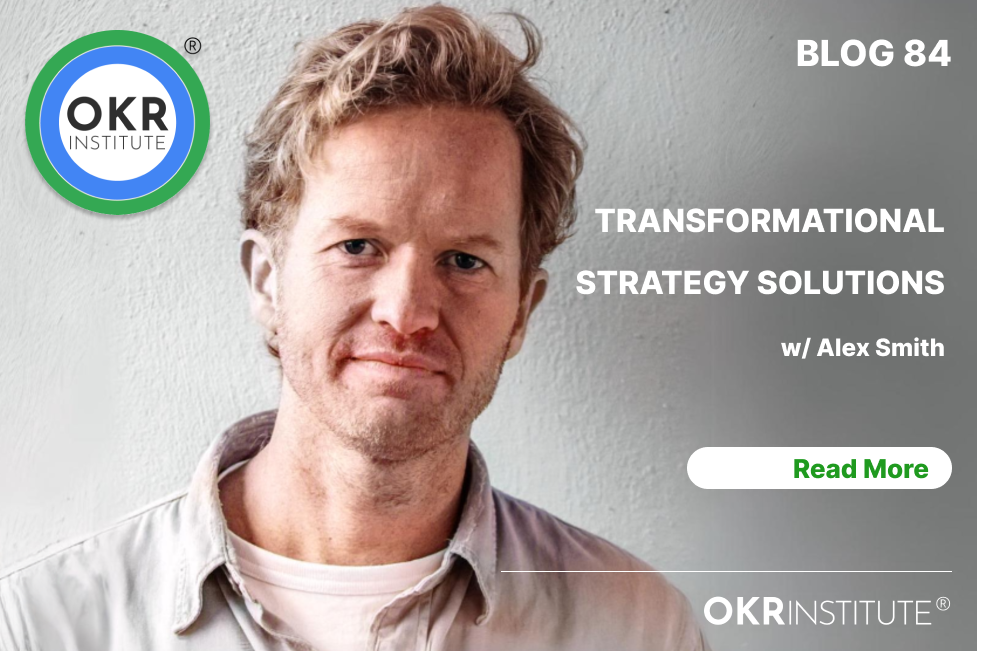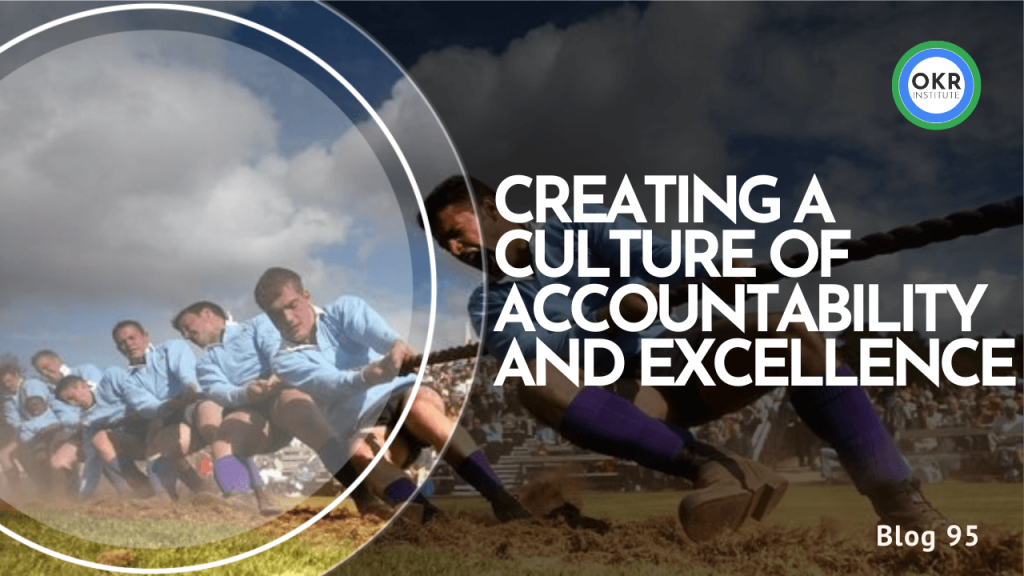OKRs and engagement, a potent combination

OKR Frameworks and Engagement- A perfect match
OKR frameworks and high employee engagement levels are indispensable to each other and present a dual opportunity – OKR frameworks can be directly focussed on driving employee engagement levels up and high employee engagement levels can dramatically increase the chance of actualizing objectives in any domain, in return.
The Harvard Business Review cites that “In academic literature, employee engagement includes four elements and can be thought of as the degree to which an employee:
- Feels committed to an organization
- Identifies with their organization
- Feels satisfied with their job
- Feels energized at work
Read further here: https://hbr.org/2021/10/how-companies-can-improve-employee-engagement-right-now?registration=success
Considering that OKR frameworks can be deployed to enhance team member engagement levels and that an excellent level of engagement is a catalyst for the actualizing of objectives, it forms a potent combination toward sustainable company growth.
To create a harmonious dance’ between OKRs and engagement as a leader, or leadership group, consider and execute the following principles and tactics. Learn the practical application of all the actions and tactics within this article by joining our courses:
Commitment
To support the increase of commitment to the organization and its objectives, showcase the societal impact of the team members’ work –
A semiconductor manufacturer does not only exist to create world-class products and can also be proud of the number of jobs it creates within a community.
A change management consultancy can stand in awe not only of the positive outcomes that the team has facilitated for an organization but also of how they have enriched the employees’ experience and their lives.
A leader or leadership group can be humbled not only by the exponential growth of their company but also by the personal growth of individuals that they have encouraged and supported. After all the core function of leadership is to create other leaders.
Link team members ‘ tasks not only to key results and objectives but also to a purpose. A sense of purpose provides meaning to work and is one of many effective countermeasures to boredom and complacency.
The bridge between personal and company identity.
When people, in general, feel safe within their roles and feel that they do not only ‘have a voice within their team but also that their ‘voice is important and will be heard a strong foundation for identifying with the company’s objectives and its general ethos is laid.
An organization that does not only care about its own financial gains but also the development of each person within the same organization fosters trust and belief in its collective objectives. If it is the case, within an organization that trust levels are high, not only amongst team members but in the leadership as well then it becomes exponentially simpler for individuals to identify with and align with the vision of the company.
Clarity of vision and collaboration in creating objectives, value systems, key results, and tasks also engenders trust. Respectful, simple, truthful, and clear communication is the golden thread that links all the elements of the ‘performance ecosystem’.
On average, it is natural for any team member to shy away from tasks that they have no confidence in completing. It, therefore, makes sense to support and mentor employees to build confidence which in turn helps them to align their behavior to and identify with the company objectives.
The core of confidence is self-trust and self-trust is an outcome of the promises to yourself that you have either kept or broken, just as action taken on promises made by leaders either ‘makes or breaks them.
There is a high correlation between how much employees care about the organization and how much the organization cares about them in turn. Leading with empathy can therefore be a powerful catalyst to higher engagement levels, yet the delicate balance between empathy and ‘firmness’ is a major factor to consider.
For a value system to have meaning and practical application it should be non-negotiable. Albeit the general climate around any engagement should be one of empathy and understanding leaders should be firm on the values and behavioral standards of the organization.
Job satisfaction
If you feel that you are ‘part of something bigger and meaningful and at the same time you are empowered to unleash your full potential as a team member your satisfaction levels as an employee is likely to be higher than average.
When from the onset my potential career path is made clear to me and I also see achievement as a real possibility based on the high-quality mentorship and leadership within the organization I am more likely to feel grateful for the opportunity.
A variety of tasks, the opportunity to collaborate, and positive yet challenging goals within the context of fair treatment are all contributing factors to job satisfaction levels.
It is not only the achievement of OKR frameworks that can be highly satisfactory but also the journey toward achievement can enhance happiness. Weekly check-ins, positive and supportive coaching sessions, town halls, and meetings are all opportunities to foster creativity, collaboration, and enjoyment.
A fair and personalized reward system supports higher job satisfaction levels and constitutes one factor of many concerning the increase of engagement levels.
An established learning culture wherein not only modern methods of learning is practiced perpetually but also failure is viewed as learning is also a contributing factor to job satisfaction.
Goal setting and engagement
Without clear goals and objectives and clarity of tasks, it is extremely difficult for team members to estimate the impact of their work. Goal-setting exercises are also opportunities to foster collaboration and creativity when done within a positive climate.
Goalsetting within the context of excellent teamwork, and positive and supportive communication that is aligned with the organizational culture can boost the engagement levels of employees and generate positive energy.
.
Talent Development Director of the OKR Institute
Related Courses
Recent Posts
Tags
#OKR
#OKR Coaching
#OKR Coach







